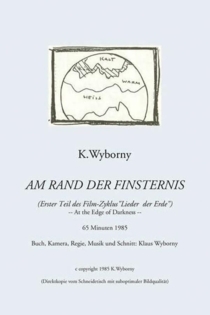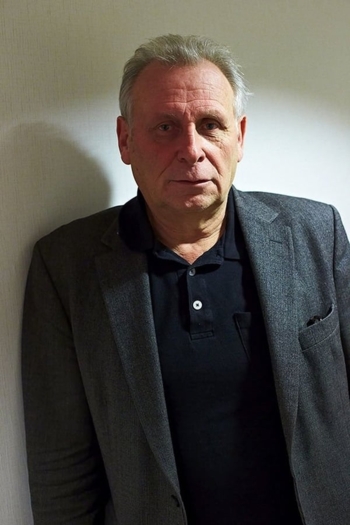
Klaus Wyborny
1945 (80 лет)Klaus Wyborny studied from 1963 to 1970 Theoretical Physics at the University of Hamburg and the Yeshiva University in New York City.
Wyborny was co-founder in 1968, with Hellmuth Costard, Thomas Struck, Werner Nekes, Helmut Herbst, Werner Grassmann, and others, of the Hamburger Filmmacher Cooperative, which took the New American Cinema as an example and would develop an European version of American underground cinema. He worked for the literary journals BOA VISTA and Henry, and was co-founder of the 'Hamburger Filmgespräche'.
Klaus Wyborny participated with others in the Documenta 5 in Kassel in 1972 with Das abenteuerliche, aber glücklose Leben des William Parmagino, Dallas Texas - After the Goldrush, Chimney Piece and A Crowd in the Face, and Percy McPhee in the section Film review: New European Cinema on the Documenta 6 (1977). Wyborny participated in 1975, 1980-1982, 1986, 1992 and 1994 at the International Forum of New Cinema in Berlin. He was also several times (2002, 2005, 2010) represented at the Viennale Festival in Vienna. In 2003 he taught at the Academy of Fine Arts in Karlsruhe.
Percy McPhee - Agent des Grauens (6. + 7. Folge)
Klaus Wyborny
Christoph Hemmerling, Hellmuth Costard
The drawings on which the series is based were created in 1969 and served as a template for a slide series in 1970. During her screening, this is interrupted by the film "Percy McPhee Agent of Horror (6th + 7th episode)".
Percy McPhee - Agent des Grauens (6. + 7. Folge)

Gnade und Dinge (Lieder der Erde Teil 5)
Klaus Wyborny
The fifth of five parts of Klaus Wyborny's "Lieder der Erde" / "Song of the Earth" cycle of films, whose theme is "the emergence of modern European civilization." The series comprises five large parts, which are in turn divided into various selections or short films.
Grace, Things (Song of the Earth Part 5)
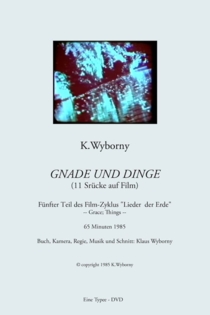
Diwan
Werner Nekes
Ludi Armbruster, Christian d'Orville
Diwan, a lyric anthology, an outdoor movie with people. With people living in the surrounding precious and very beautifully photographed nature, are neither more nor less than one part of it. What Nekes manages there with landscape, as a cunning and quote many fine artist in a medium that runs in time, as he defeated the time changed, by themselves for change of scenery uses, as it interferes with the laws of chronology through the rewind ability of the camera or destroyed, which is a compelling and highly aesthetic experimental company.
Diwan

6 kleine Stücke auf Film
Klaus Wyborny
... Klaus Wyborny's "Six little Pieces on Film" is the type of work that one is more accustomed to see in Sohos's showcases. Its a Structural film comprised of five or six sequences. Within each there are a set number of shots or kinds of shots which are repeated with variations in camera speed, shot length and processing. Wyborny's subjects include a harbor, a house, an urban street and industrial sites. At tiomes the images fly by so fast that we struggle to recognize them. When the cutting slows down, we can begin to get a sense of place but then the editing will speed up again and the images are turned into elaborate rhythmic patterns. The kinds of perceptual experiences the film affords are characteristic of the Structural genre rather than innovative, but pleasurable nonetheless. ....
6 Small Pieces of Film

Studies for the Decay of the West
Klaus Wyborny
Wyborny’s latest flicker film concentrates on factories, industrial wastelands, waterways, cityscapes, and the bits in between, and has an uncanny emotional resonance. It is “serene, in the manner of ants”—to quote the title of the second section—but it is also elegiac and melancholy. Like two other old cranks (Godard and Straub), the director stays true to ideas about filmic composition gestated over many years and thereby provides a glimpse of a utopian cinema.
Studies for the Decay of the West
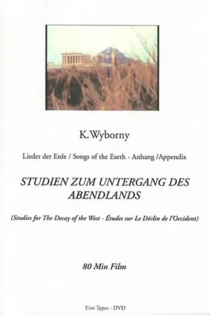
Unerreichbar Heimatlos - Sonate auf Film
Klaus Wyborny
UNREACHABLE HOMELESS is particularly lost on the eye, at times changing color, focal length, or focus with every other frame. Its staccato rhythms are not unlike those of Paul Sharit's flicker films, though the use of continually recognizable imagery creates compelling effects within the picture's deep space as well. Wyborny's shots are brief but filled with interior motion. He varies his exposure so that background areas suddenly materialize, or uses single framing to scurry occasional cars or barges across the screen.
Unreachable Homeless - Sonata on Film

Dallas Texas / After the Goldrush
Klaus Wyborny
"Wyborny trained as a mathematician, worked as a cameraman on Werner Herzog's Kasper Hauser. He first attracted the attention of the New York and London avant-gardes … for his elliptical narratives, Dallas Texas - After The Gold Rush (1971) and The Birth of a Nation (1973). Their plots, 'collapsed' by the optical transformation and repetition of individual shots, move from anecdotal narrative to an examination of narrative construction itself. His method was analogous, in a way, to that of novelists like Robbe-Grillet (e.g. Jealousy), though Wyborny was far more interested in the actual materials of film than were the french 'new novelists' when they turned to cinema. His work was further characterised by a romantic appreciation for desolate, ruined vistas." - J. Hoberman
Dallas Texas / After the Goldrush

Eine Andere Welt (Lieder der Erde Teil 2)
Klaus Wyborny
The second of five parts of Klaus Wyborny's "Lieder der Erde" / "Song of the Earth" cycle of films, whose theme is "the emergence of modern European civilization." The series comprises five large parts, which are in turn divided into various selections or short films.
Another World (Song of the Earth Part 2)

Die Geburt der Nation
Klaus Wyborny
Klaus Wyborny, Nick Busch
The film depicts, in an anecdotal, quasi-anthropological style, the efforts of a group of men in a desert to achieve some kind of social organisation. An opening title locates the action in Morocco, in 1911, the date evidently refers to the work of D.W. Griffith.
The Birth of a Nation
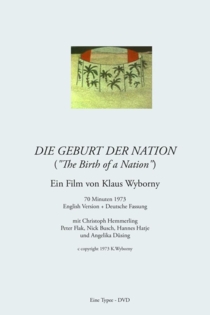
Das offene Universum
Klaus Wyborny
Christophe Hemmerling, Hanns Zischler
The whole world in one film: Robert, a young Dane, is shanghaied in Marseille, and via Acapulco he is abducted into the South Pacific. There he kills his father and seduces his mother. Then he explores the changing world. The end finds him in a Polynesian village, where the chief bestows him with a girl of his age-class. A novel of adventure, a novel of love, also an oratory of some sort.
The Open Universe

